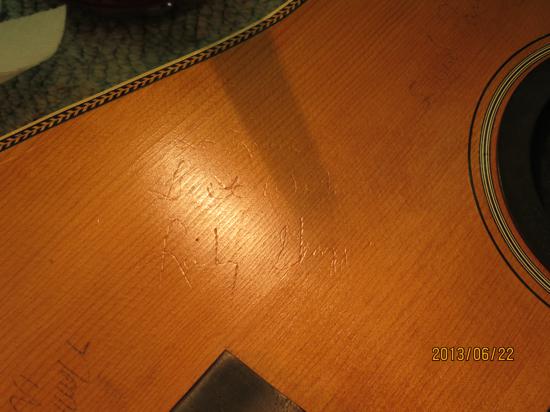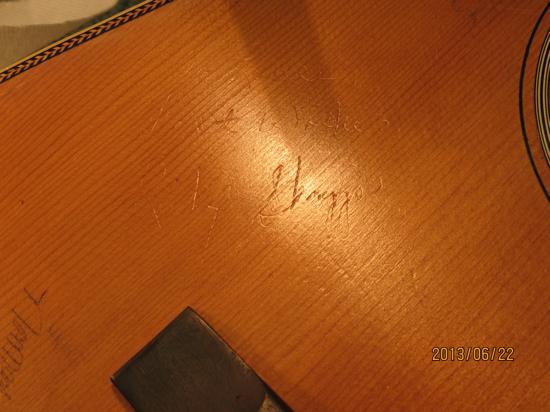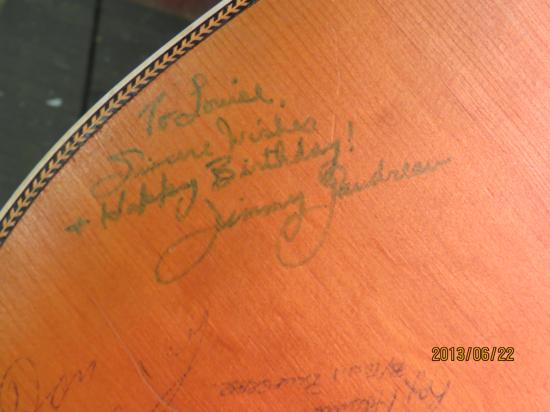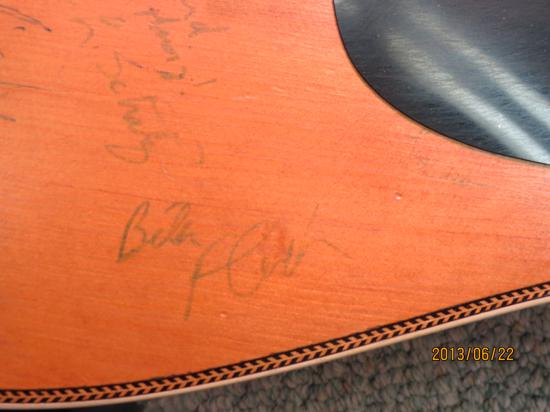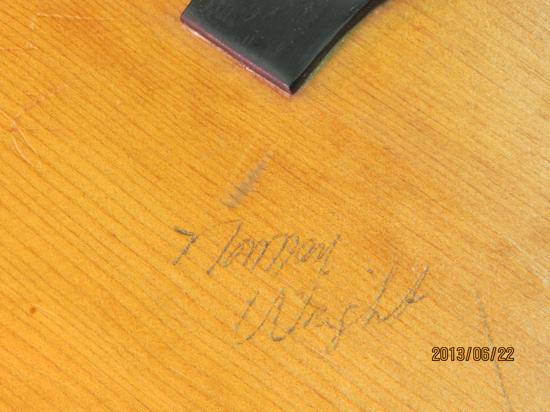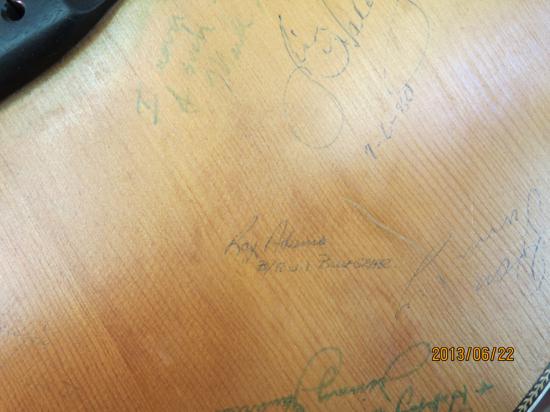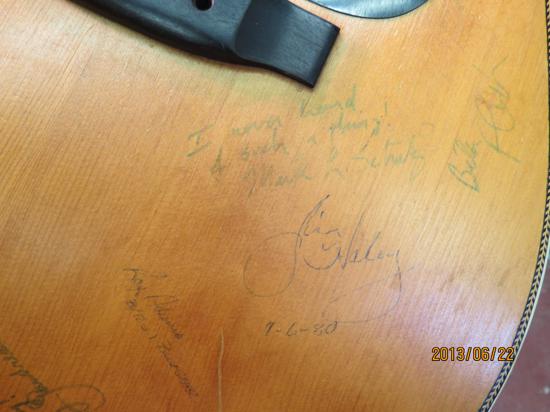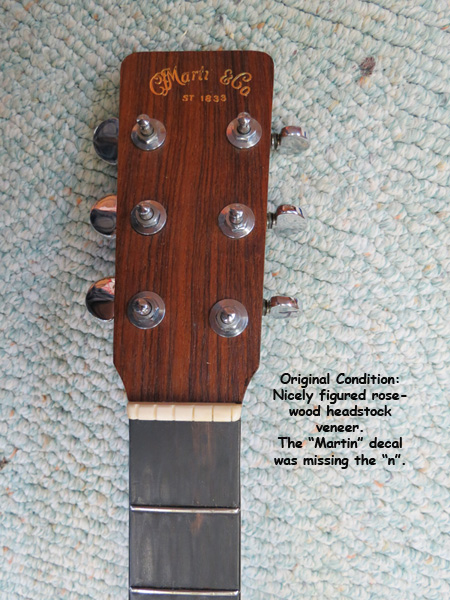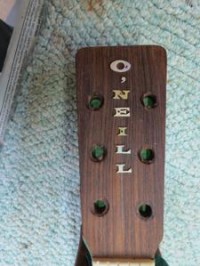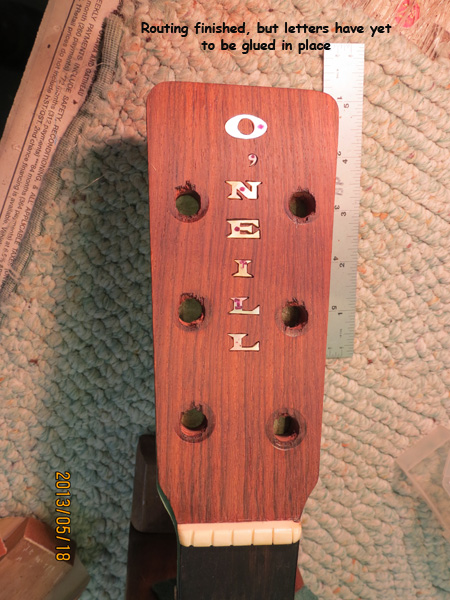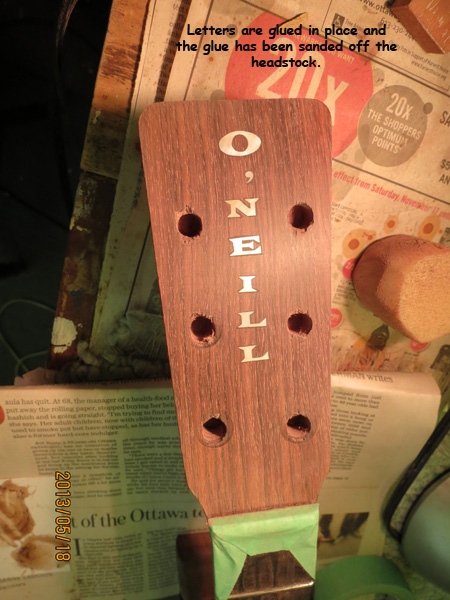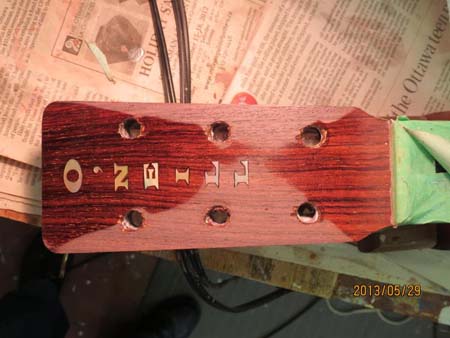A Signature Guitar
In the early 2000’s I started going to John’s Barber shop in Kemptville, Ontario. I remembered at the time that there was an album from somewhere in the seventies called “Don’s Barber Shop” that featured Ralph Carleson & Country Mile. Lo and behold – there in the barber shop was Don O’Neil who was the inspiration for that title song. Don even cut my hair. Kool. Over the following years Don has become a friend and a supporter of my inlaying endeavours. We chatted about a number of things and at one point he mentioned a guitar that he had purchased that he would like inlayed. He wanted to be able to pass it on to someone in his family and we eventually settled on inlaying the headstock with his family name.
It’s an interesting guitar. The original owners had built a Martin kit guitar and had taken it to several festivals, where they had asked the performers to sign the top of the guitar with a ballpoint pen (I think). The ink has since faded away, but the indentations are still there. Below are photographs of most of the signatures – Ricky Scaggs is one of them !
Here’s a shot of the Original Headstock:
To get started I typed O’NEILL in a number of different fonts and sizes and showed them to Don. He picked a Wide Latin font, which was not my first choice, but Don was sure that’s what he wanted, and in retrospect I think his choice was better than mine. We agreed that the sizes would be from 36 points down to 26 points to best fit the shape of the headstock.
Next I cut the letters from both Abalone and Mother of Pearl to see which shell would best suit the rosewood. Which one would you have chosen ?
I’ll admit that the photo showing the abalone isn’t all that clear, but even so, the letters just don’t sparkle. In general abalone is often muted in comparison to MoP. Don chose the Mother of Pearl.
The next steps were to route the letters in the guitar headstock, glue in the pearl letters with epoxy glue, sand off the excess glue and apply many coats of nitro cellulose lacquer.
Applying the lacquer is where I ran into trouble. The spray bombs that I was using put out insufficient spray for the job, and resulted in a very, very thin coat of lacquer. As well, the headstock wasn’t completely flat, so when I finish sanded the headstock in preparation for buffing, the center was untouched but the sides were wreaked. Ouch !
So I telephoned my friend and top notch luthier, Jim Spooner, who has kindly offered help and advice many times. Jim immediately diagnosed the problem as insufficient spray and set about righting things using a proper spray gun in a spray booth. The finished product looked a lot better.
Don was quite pleased with what is now an O’Neill family heirloom.
